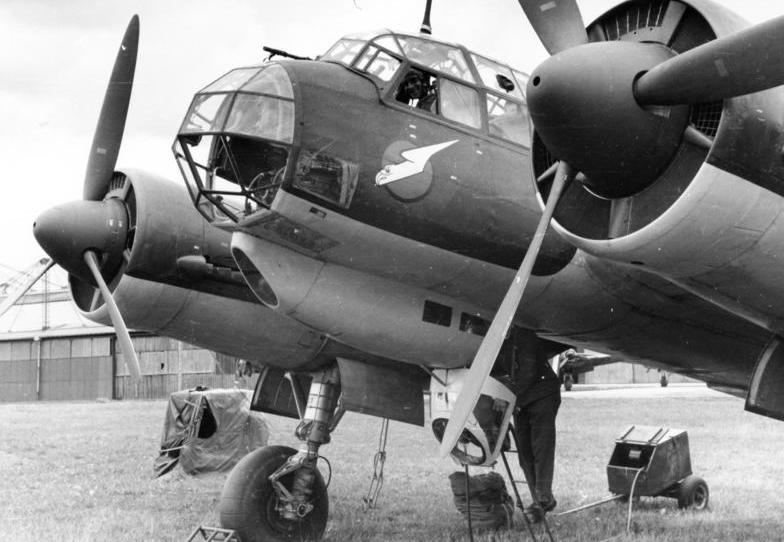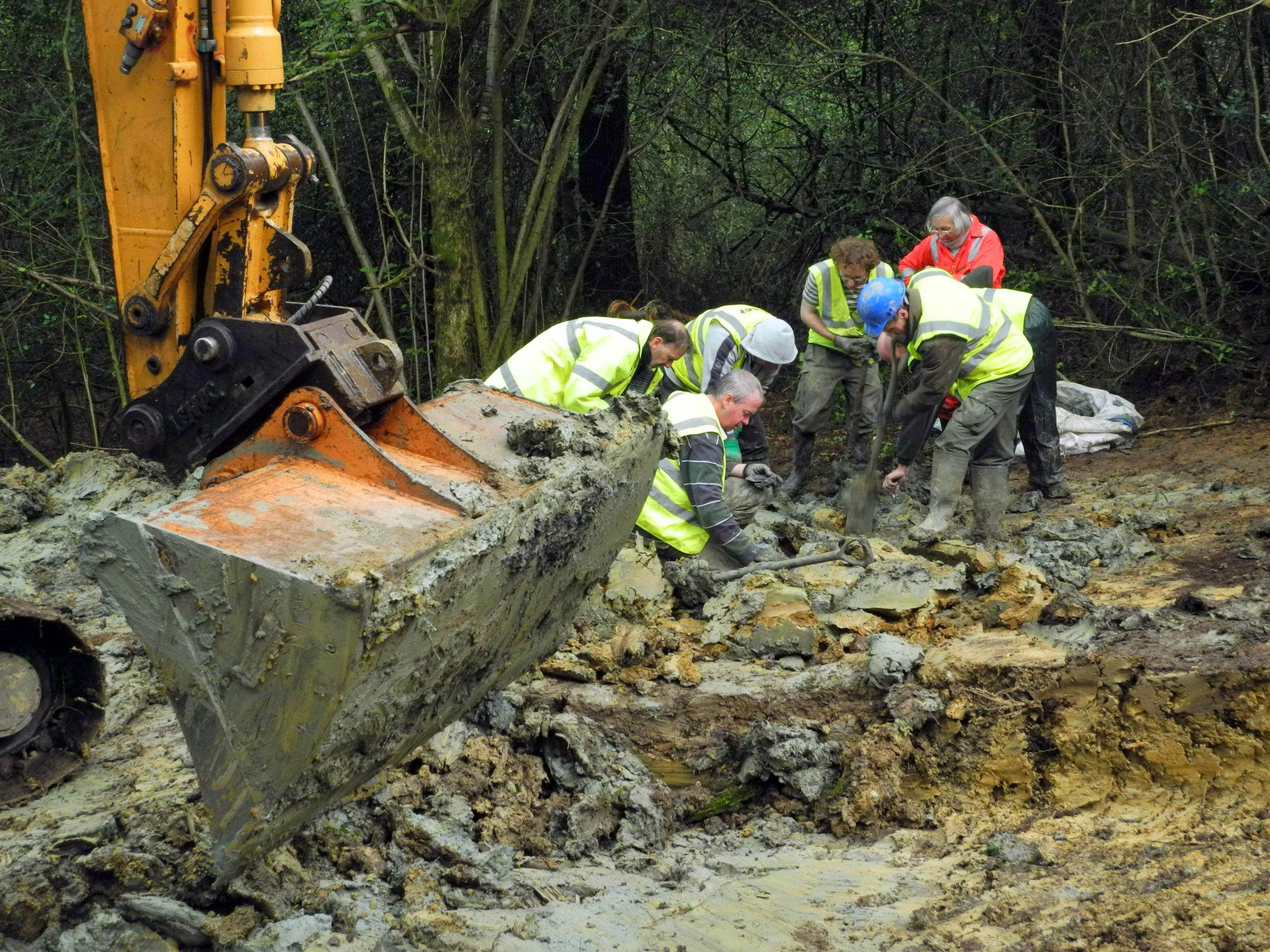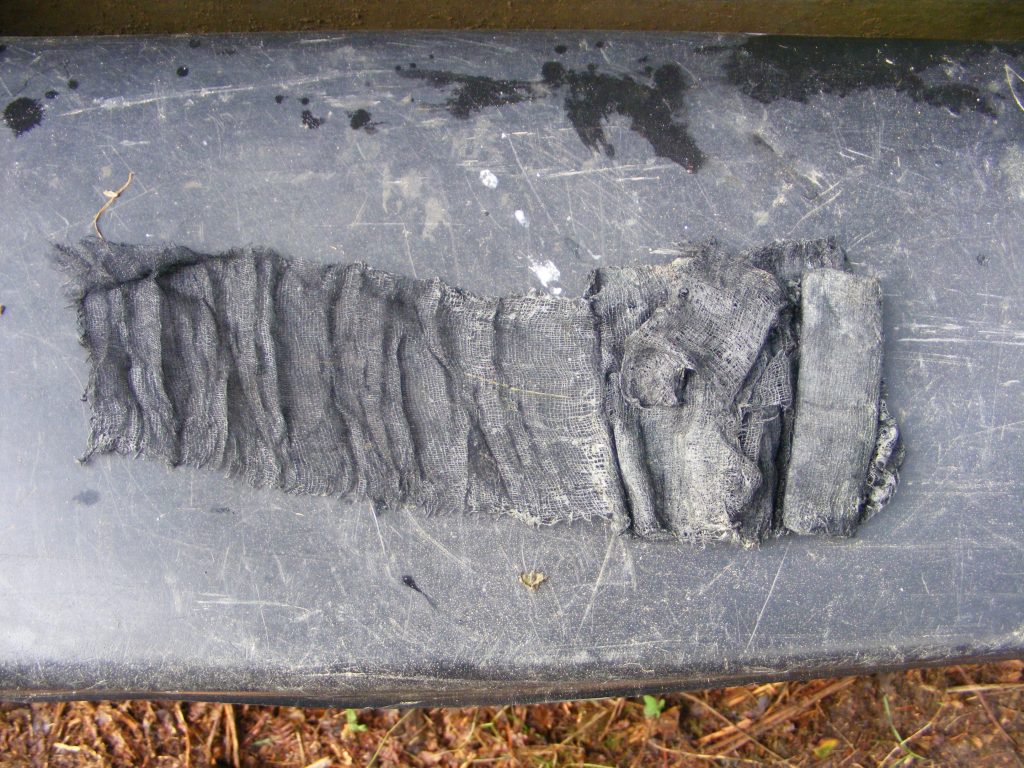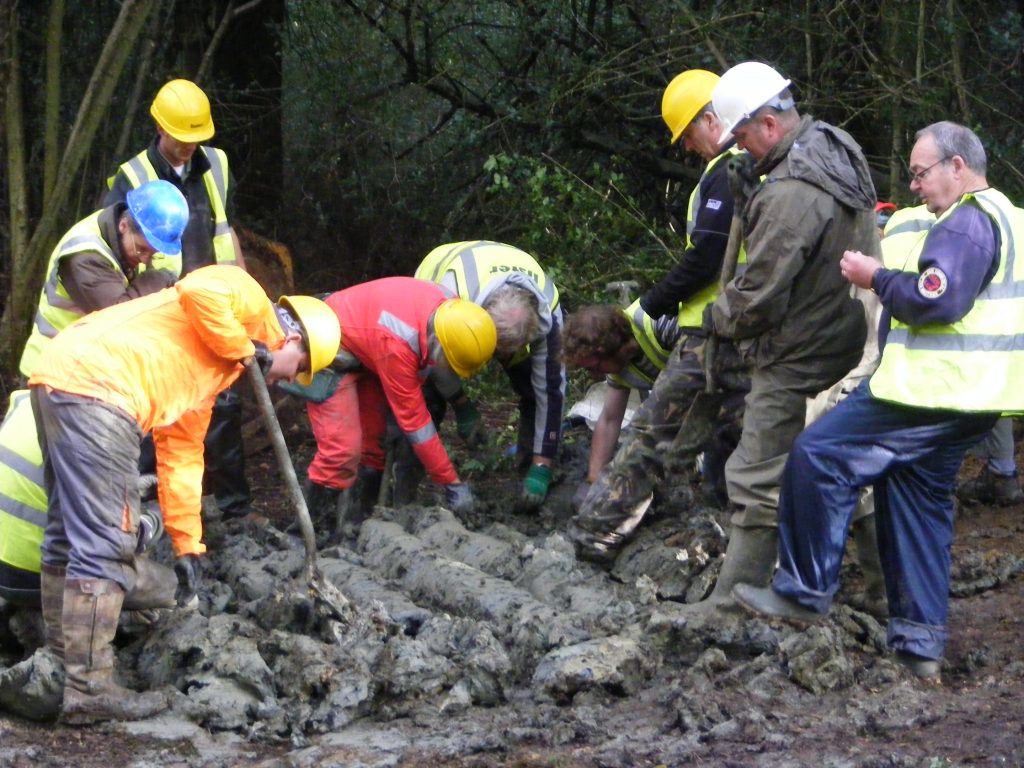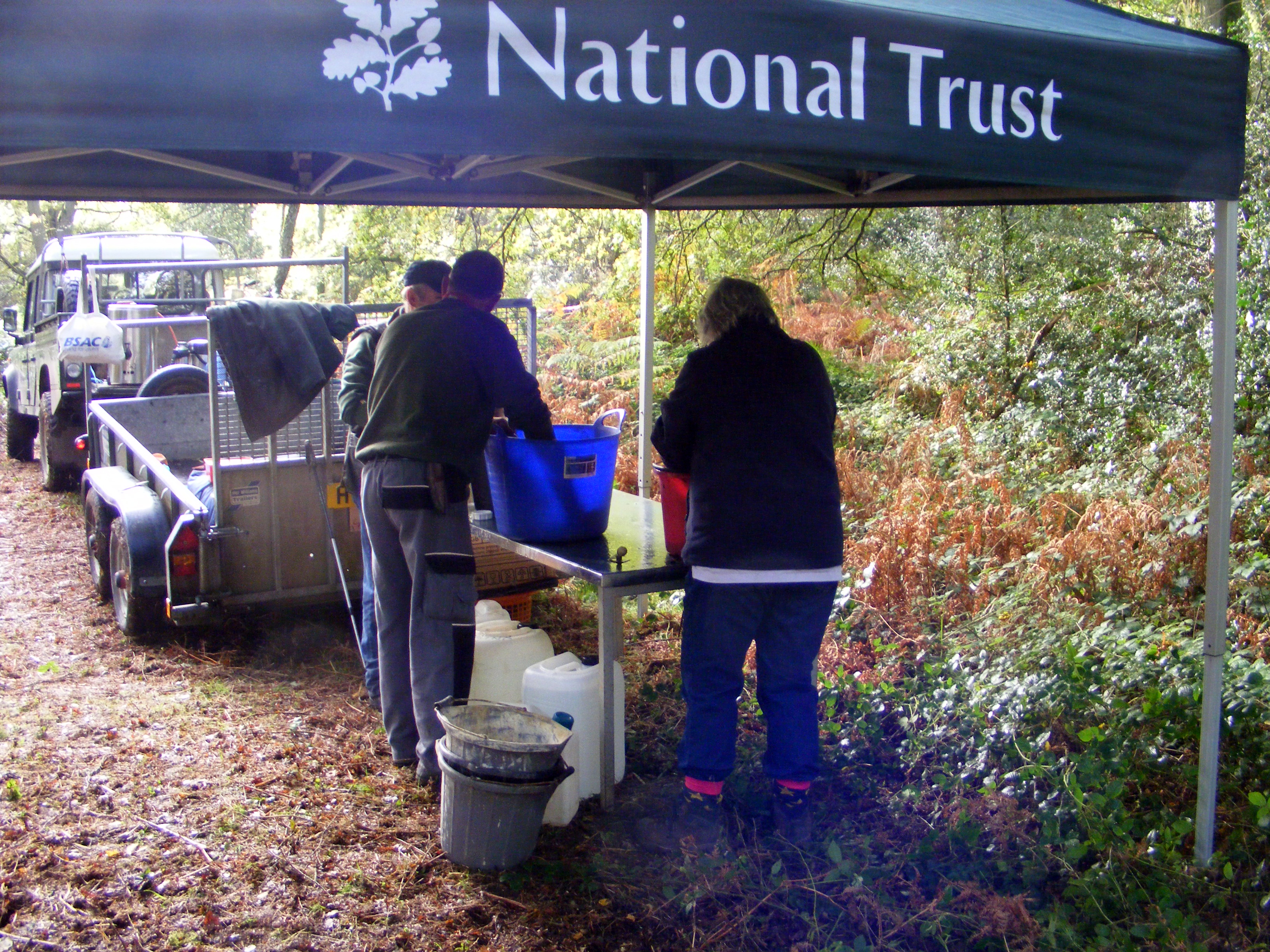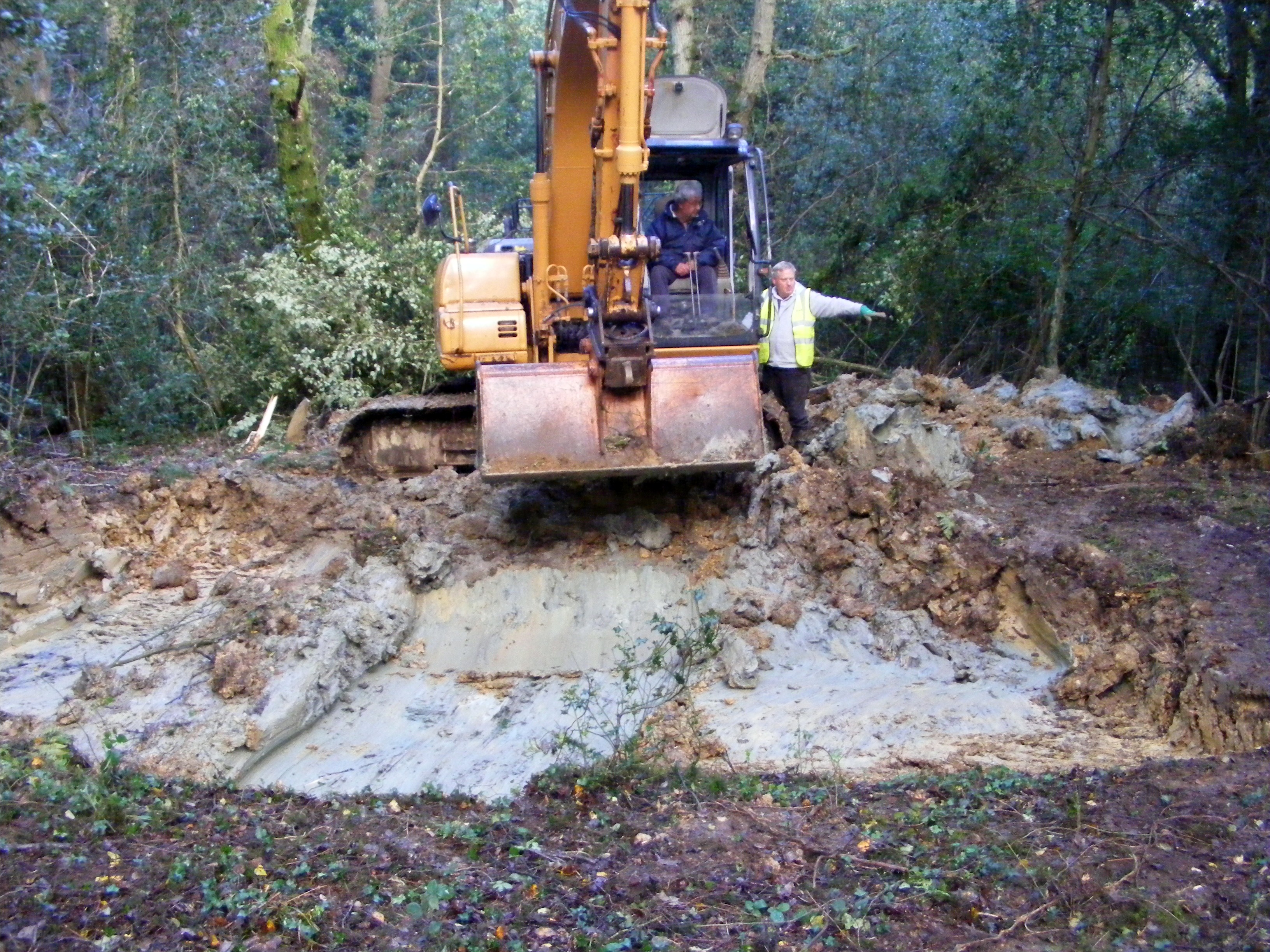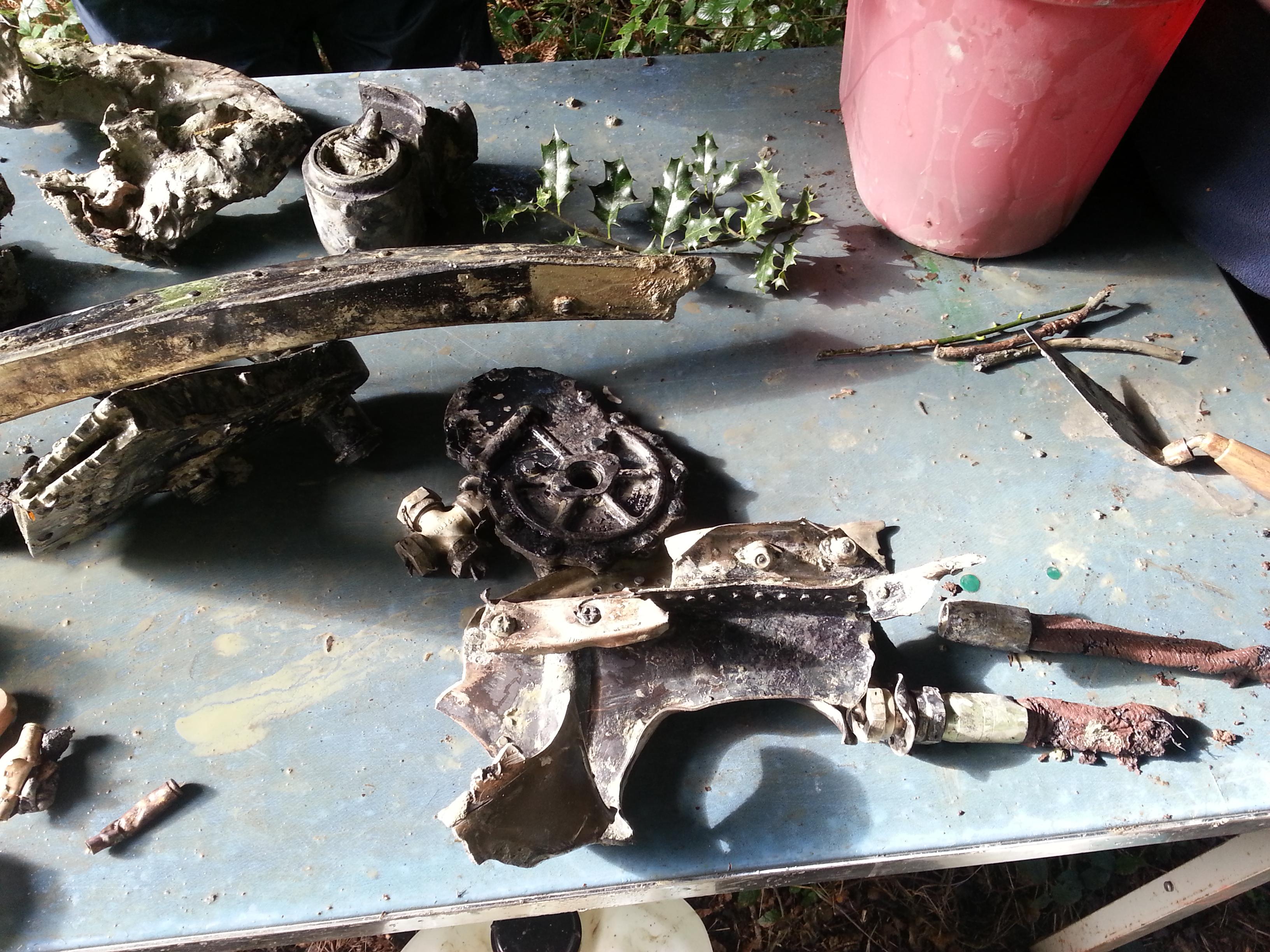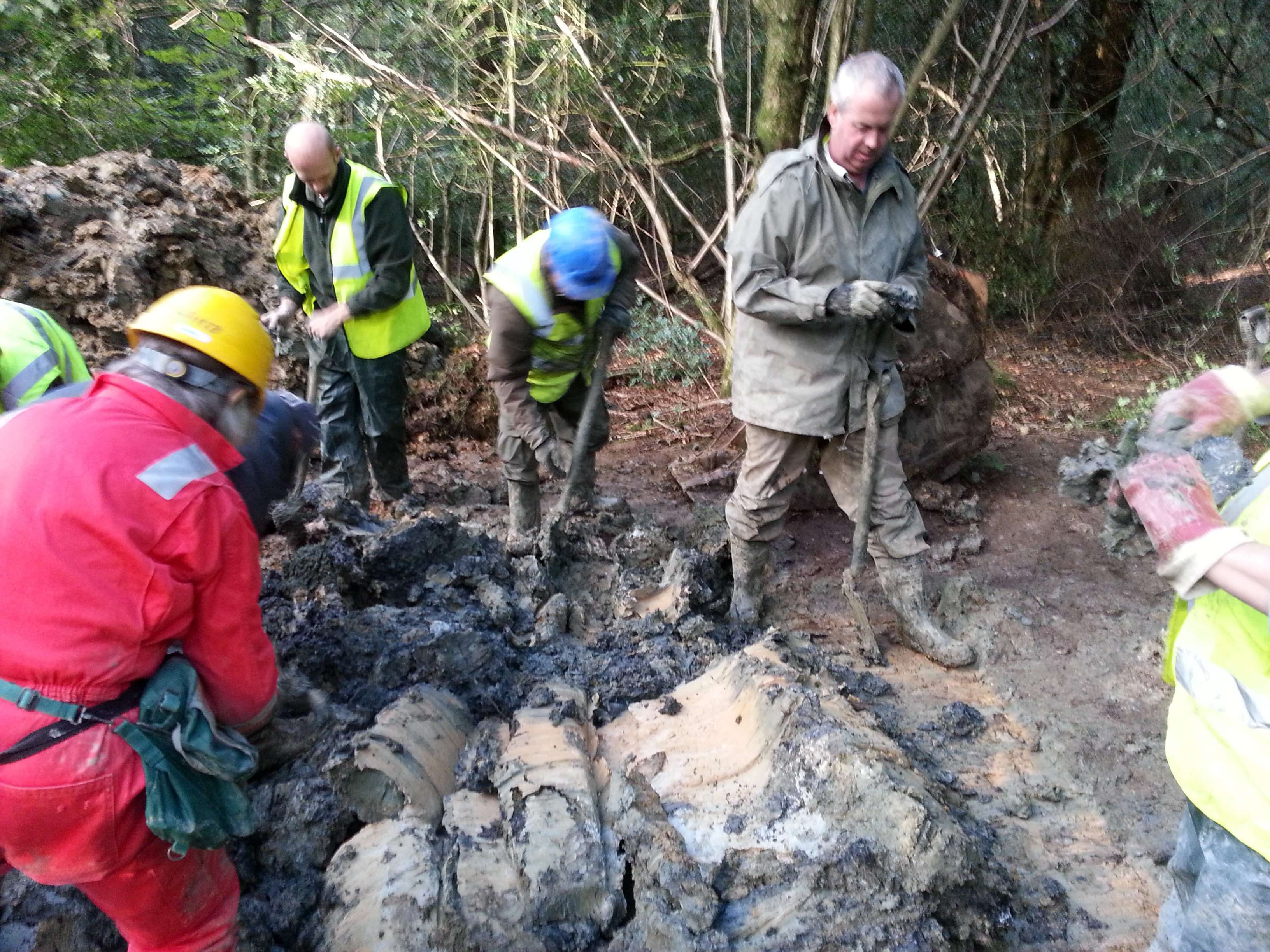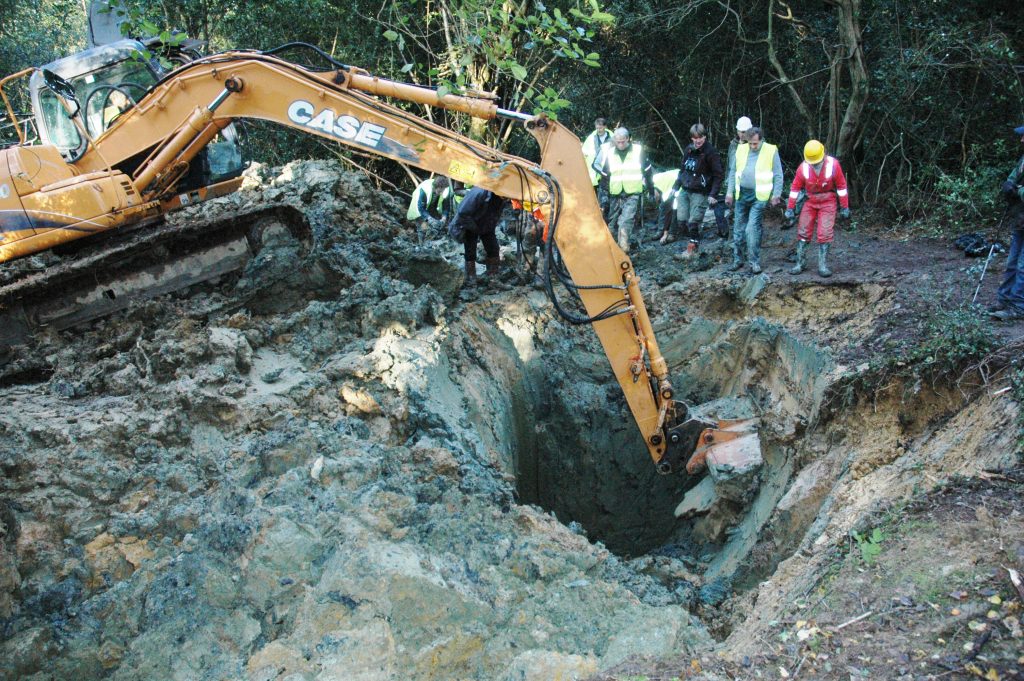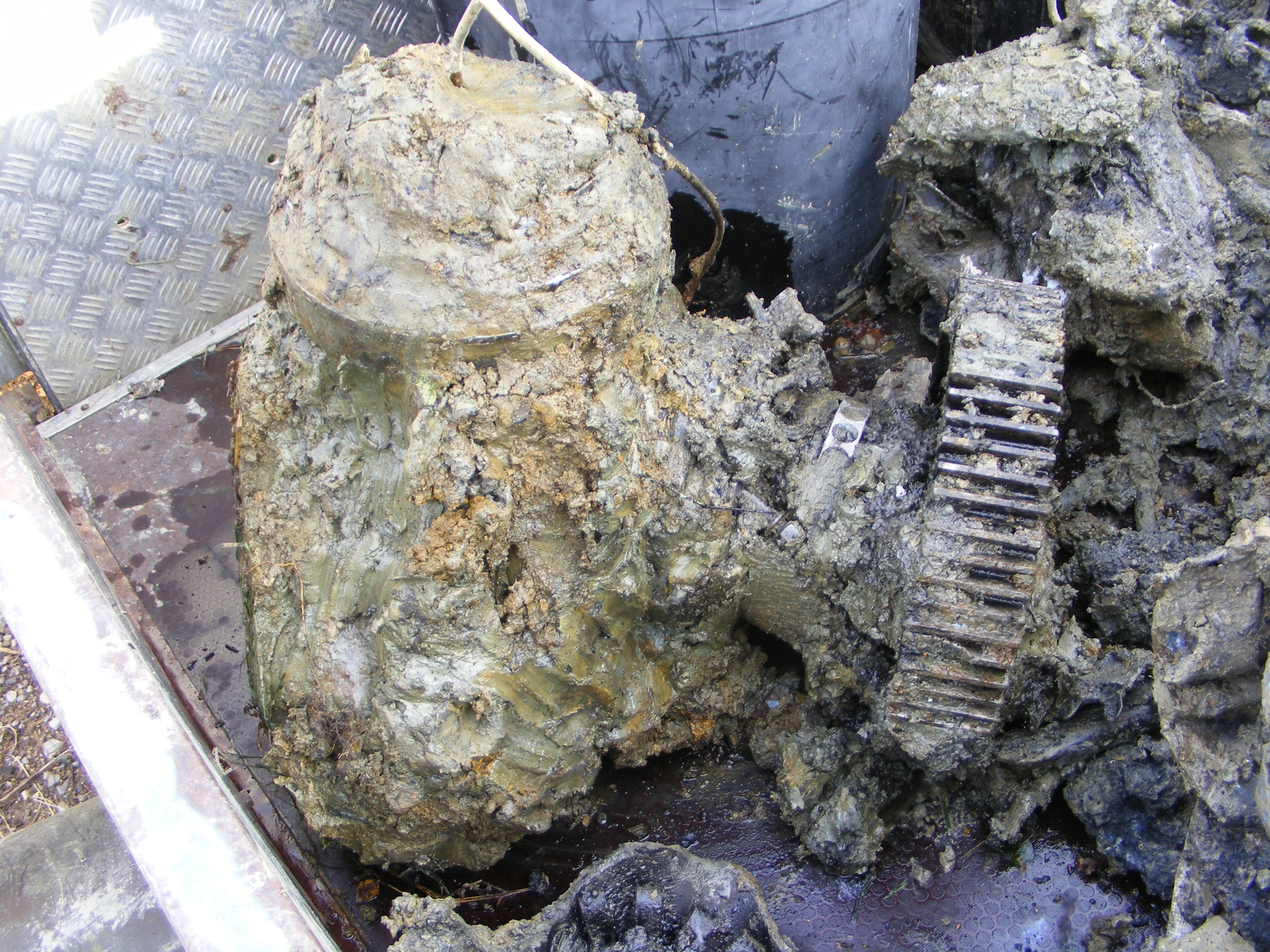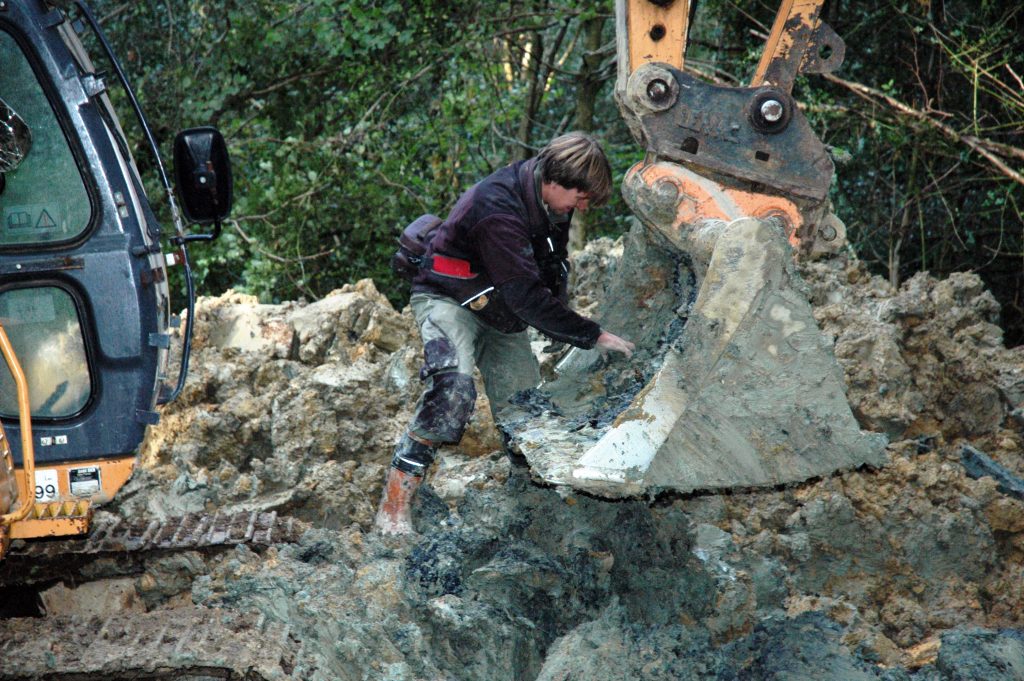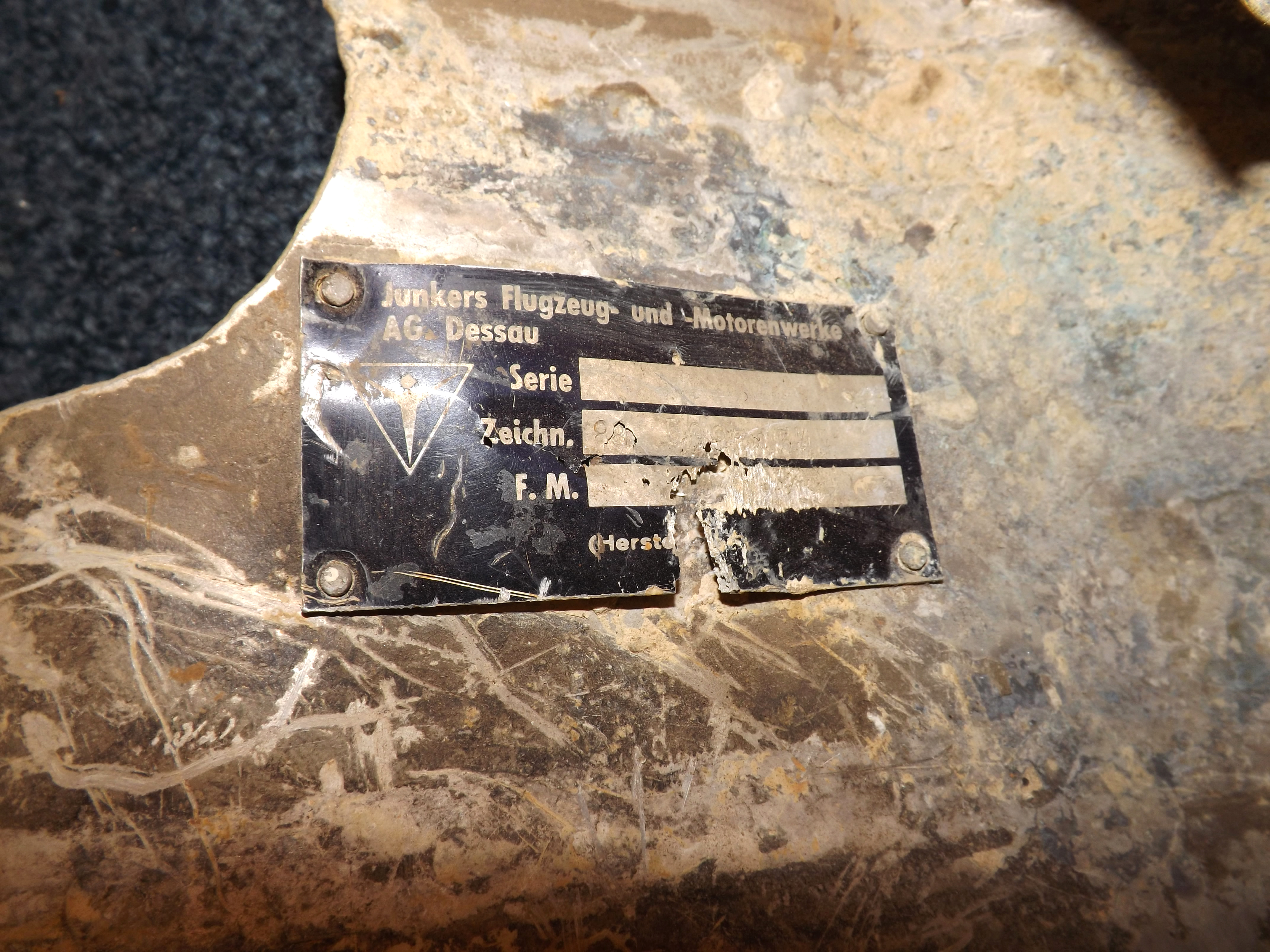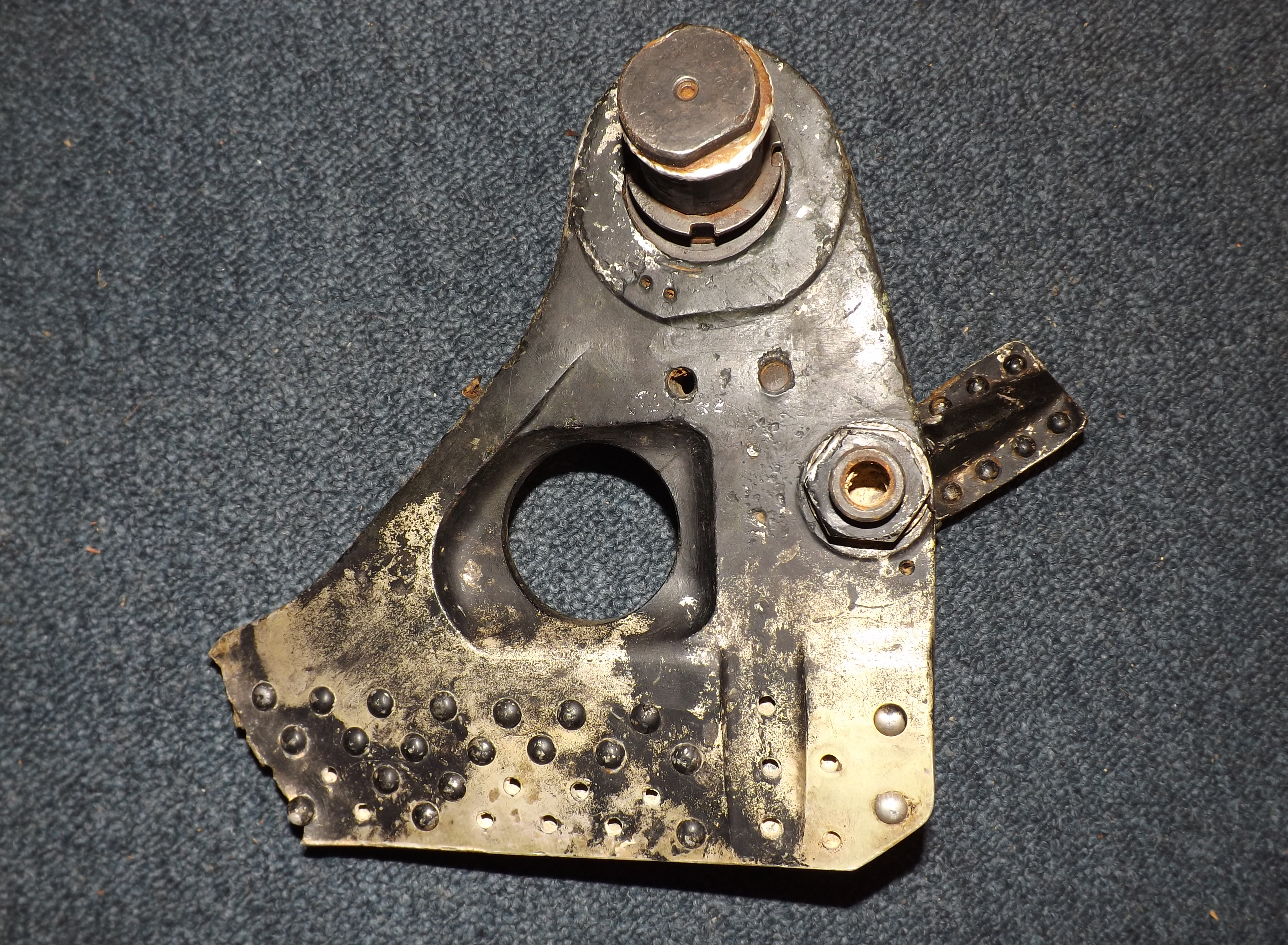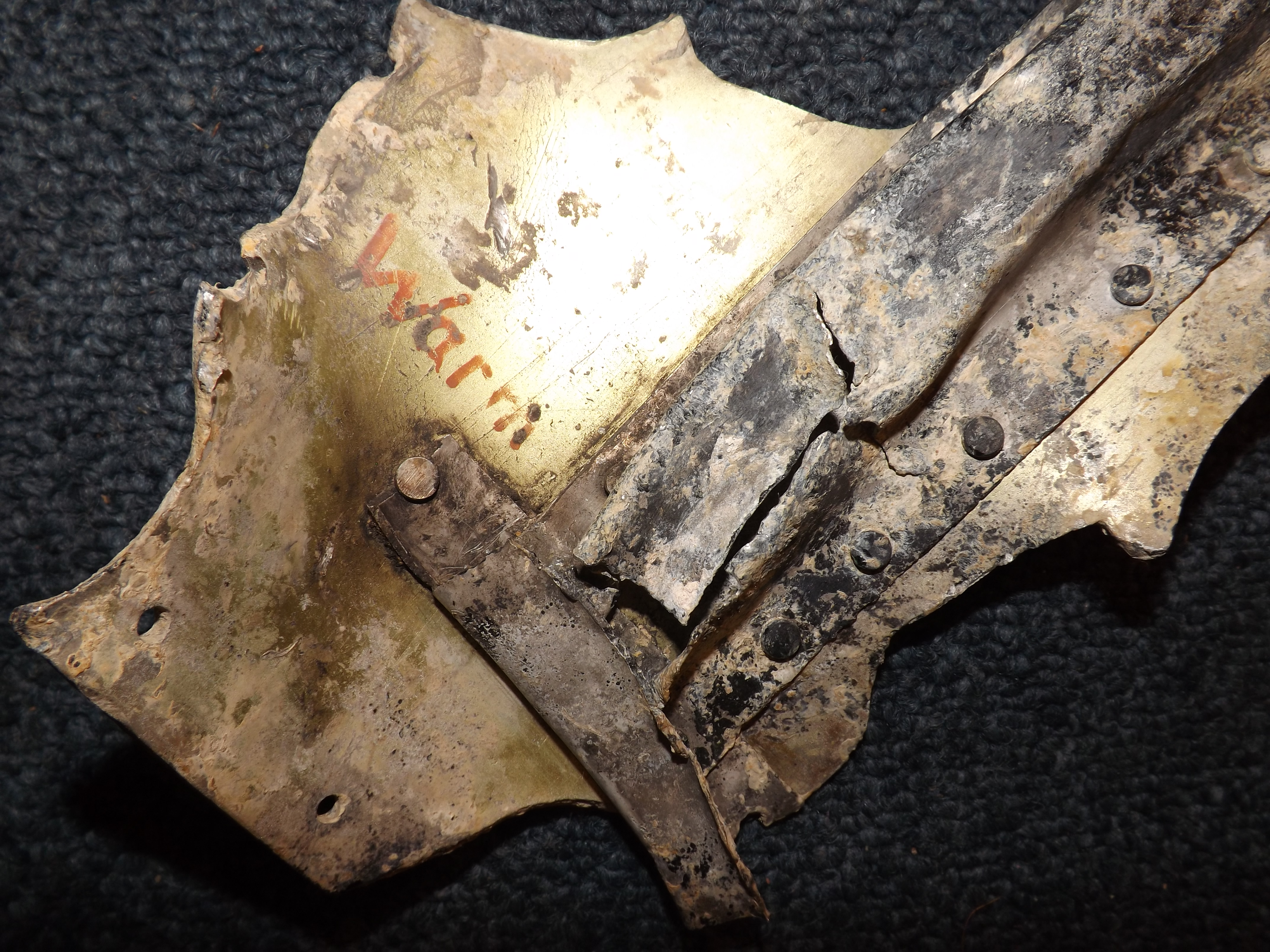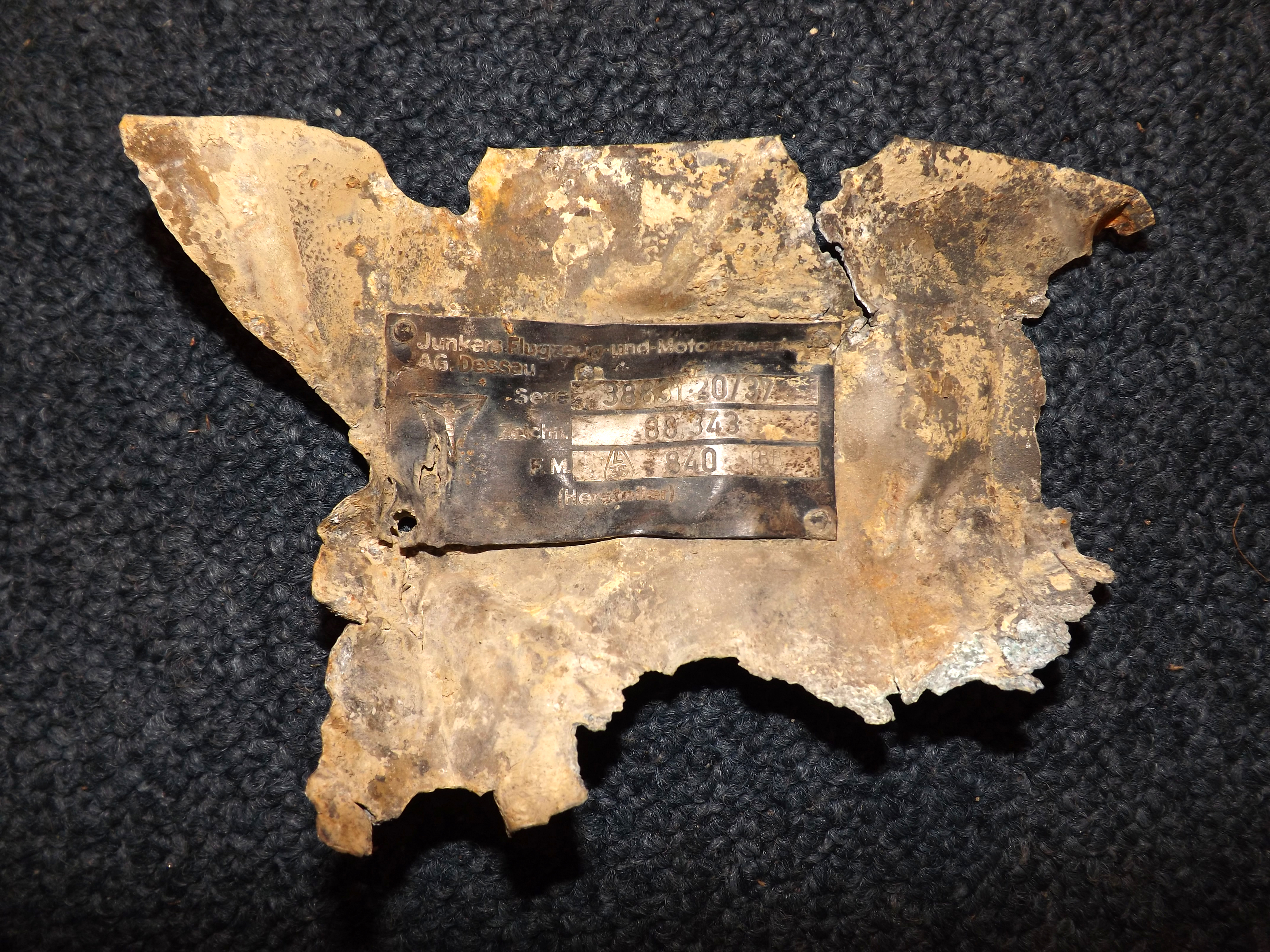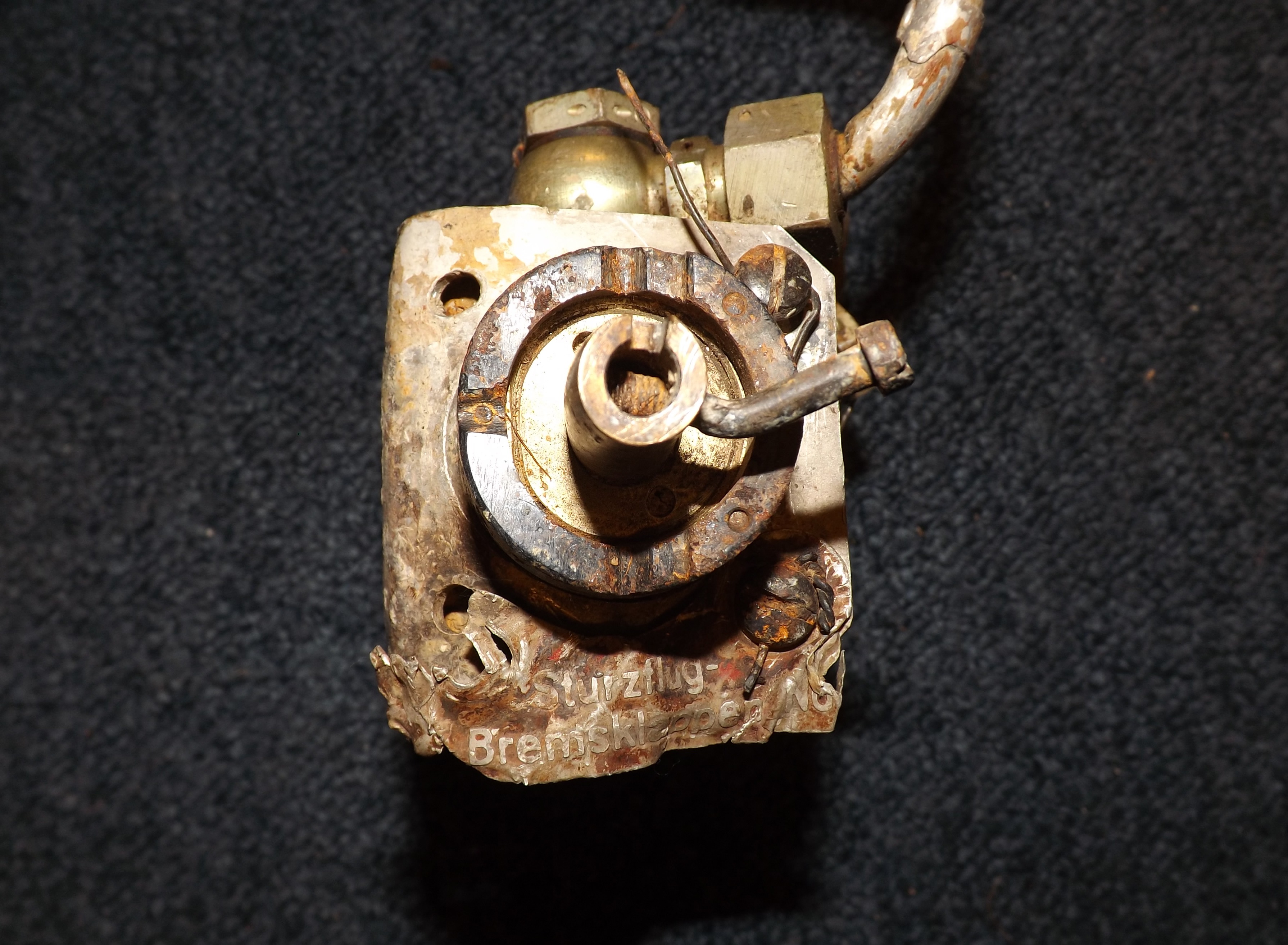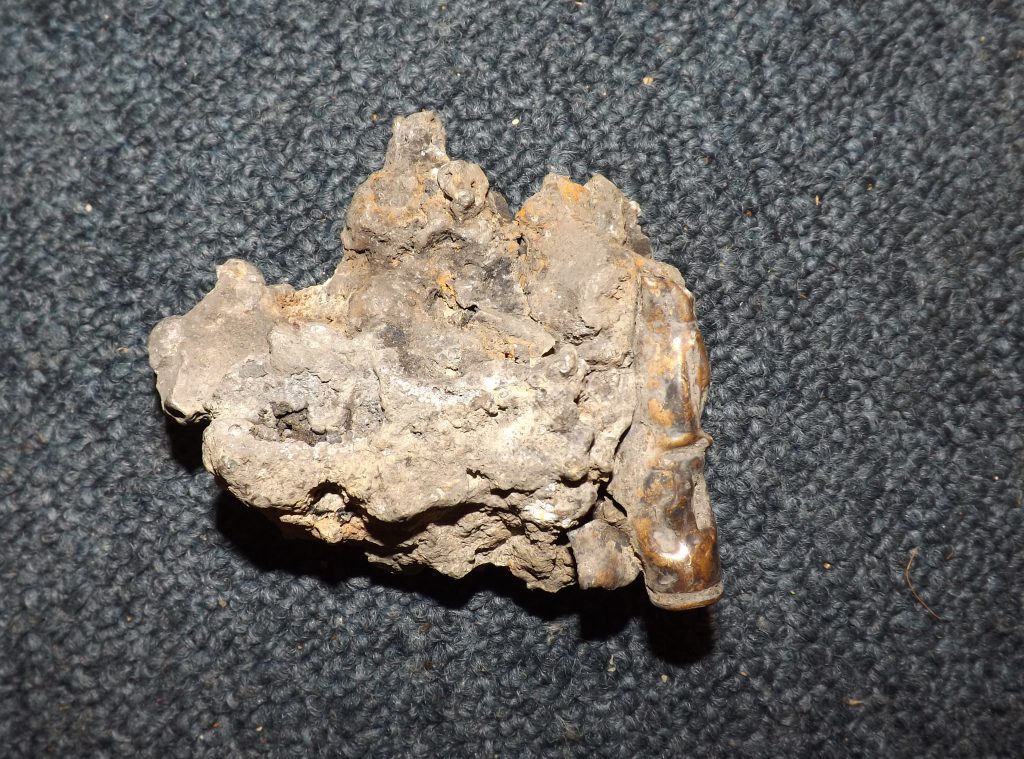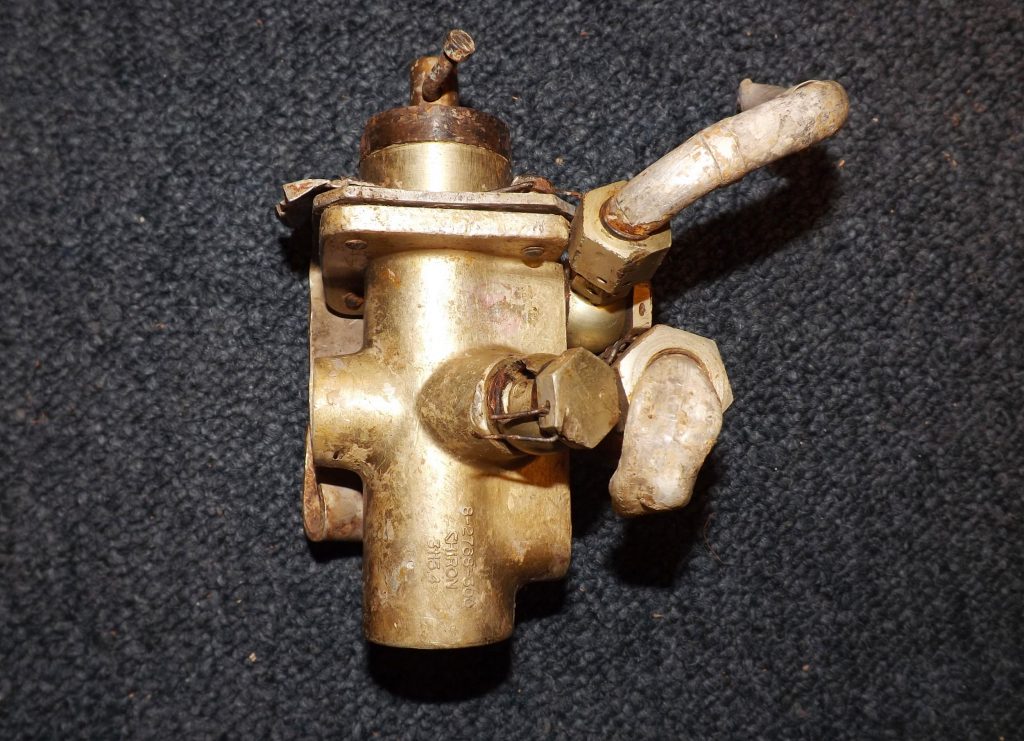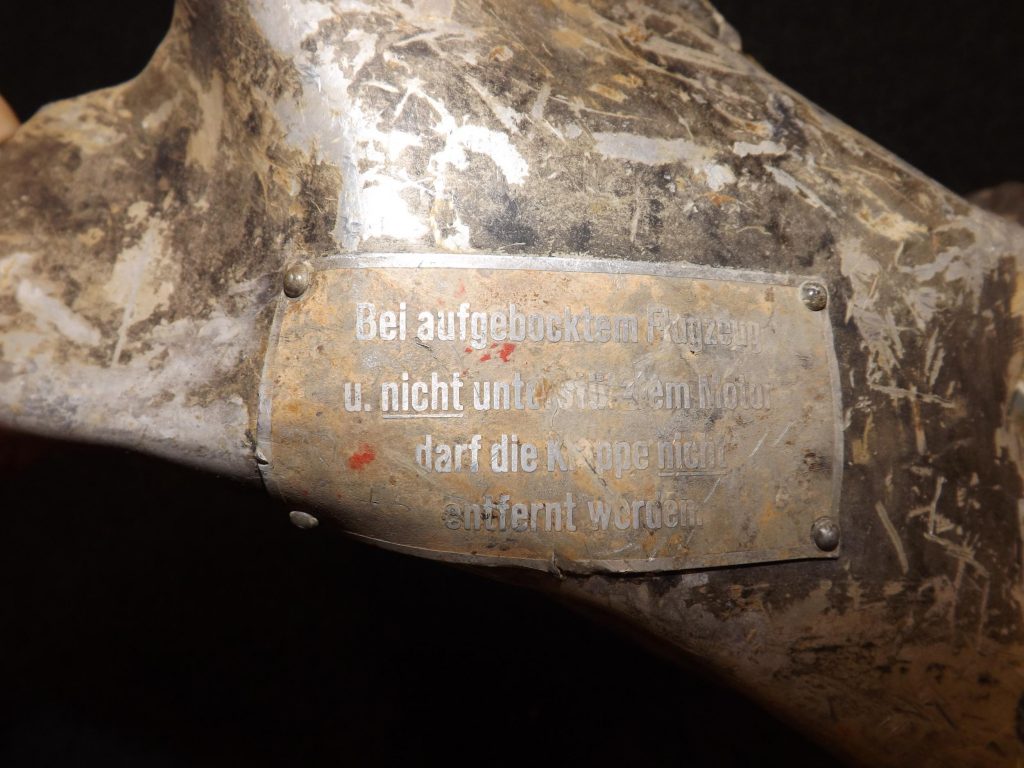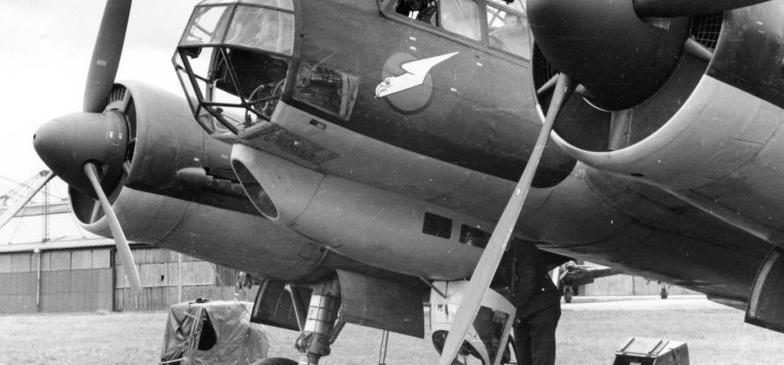
Details:
- Mission: To bomb London (The Little Blitz of 1944).
- Date & Time: 14/15th March 1944, 23.05 hours
- Unit: 6 Staffel/Kampfgeschwader 30
- Type & Werk Nr: Junkers Ju 88A-14 140099
- Code: 4D + FP
- Location: Blackbrook, (Holmwood Common) near Dorking, Surrey.
Reason for loss:
After cannon fire had been heard in the air over the Surrey countryside, this aircraft was seen to be on fire. After a while it dived into the ground at a steep angle and was completely wrecked. Some H.E. and incendiary bombs were jettisoned in the neighbourhood shortly before the aircraft was seen to crash. These were estimated to be four 250kg and four 50kg; one of the latter was a phosphorus bomb.
This aircraft was shot down by an RAF Mosquito night fighter of No. 96 Squadron piloted by F/L. Head and F/O. Andrews.
The Mission 14/15th March 1944
This aircraft was briefed to attack London immediately to the west of the Isle of Dogs and the bomb load was to be released at a height of no less than 14,500 feet.
The first leg of the mission was to a point slightly north of the directional searchlights near Ijmuiden. Pilots were to climb at that moment to cross the Dutch coast at 5,000 feet. Immediately after the coast had been crossed height was to gained and the formation was to turn at a prescribed point over the North Sea.
Landfall was to be made over the Suffolk coast at a height of 17-18,000 feet and, after locating a turning point marked by flares near Newmarket, crews were to approach the target in a North-South direction. After leaving the target area, course was to be to a turning point between Reigate and Horsham. Then to a point in the Channel South-East of Beachy Head. Then to the visual beacon at St. Valery-on-Caux. A height of about 15,000 feet was maintained until the English coast was crossed on the homeward flight, after which pilots were to reduce height to cross the French coast at 1,600 feet to land at Orly.
The crew of Junkers Ju-88A-14 140099
Pilot: Unteroffizier Gerhard Straube 214890/69
Killed (Born 02.07.1922 in Weissenfels.)
Observer: Unteroffizier Alfred Schiffmann 214890/70
Killed (Born 14.05.1922 in Hergensweiler Bez.Lindau.)
Radio/Op: Unteroffizier. Hans Sing. 214890/71
Killed (Born 01.08.1920 in Schorndorf.)
Gunner: Gefreiter Heinz Wende. 214890/72
Killed (Born 26.04.1924 in Maibach/schles.)
Burial details: Deutsche Soldatenfriedhof Cannock Chase, Staffs. Block 9. Grave 33.
There was one other crew member buried at Dorking with Straube but sadly he is unidentifiable out of the remaining three crew.

“My brother was a very bright and mentally alert man, he was a very conscientious and disciplined scholar, he enjoyed building model aircraft, reading books and drawing. Upon leaving school he started an apprenticeship as a locksmith and precision engineer, he completed his apprenticeship with very good marks in 1939.
In 1940 he volunteered for the armed forces and the Air Force in particular. After training he transferred to Itzehoe near Lübeck. It was from there I am sorry to say, that raids were flown against the UK. The fact that he had to drop bombs on other countries, towns and people (albeit under orders) was something that bothered him greatly”.
Extract from a letter written by the pilot’s sister
(with thanks to Mike Croft):
Excavation of the crash site:
The crash site of 140099 had been excavated twice before.
The first dig was carried out in the 1970s when one of the Junkers Jumo 211 engines was recovered. The team at the time had believed it was another Junkers Ju-88 that crashed during the Battle of Britain and had little interest in continuing with the dig. The excavation was duly filled in and forgotten about.
Then, in the 1990s the crash site was re-dug when a second Jumo 211 engine and a mint prop boss was found and recovered by the team. During this dig many interesting items were discovered from the fuselage area including a leather map case complete with maps, and a crew member’s forage cap. A burnt parachute was also found reminding the team of the human tragedy that happened all those years ago. A complete undercarriage leg with remains of a shredded tyre was also found along with sections of wing spar and other undercarriage parts including a rudder mass balance weight.
Another remarkable find was found when an Iron Cross complete with its citation document was unearthed. A bent and battered Luftwaffe fork and a wooden handled knife was also found in the fuselage area and provided evidence of the squadron’s recent relocation. The unfortunate crew were still carrying onboard a number of personal effects and hadn’t had the time to “settle in” before being briefed to fly another raid on London. After careful cleaning one of the maps revealed several pencil marks tracing the squadron’s move from the Mediterranean and quite remarkably an “X” marked their aiming point on London.
Many of these items recovered during the second dig were rescued and kept together by the museum and are now on display at the Wings Museum.
The final Excavation by National Trust 2012:
Due to a number of illegal “digs” being carried out by members of the public, the National Trust became concerned about the state of the crash site. The site was littered with old plastic bags, bottles and even an all-in-one suit that one particular “night hawk” had used during their digging activities. With all this going on, Sam Bailey of the National Trust began talking to the MoD with a view to carrying out one final comprehensive dig on the crash site to ensure that the site would be left in peace once and for all, ensuring there would be nothing left for the souvenir hunters to find.
After months of letters, phone calls and e-mails, the MoD finally granted a licence for the excavation. The Wings Museum had the great privilege to be invited along on the dig.
On Saturday the 13th of October 2012, a team assembled at the crash site of 140099 to uncover the last of her secrets. Digging commenced at approximately 10am and the first small pieces of 140099 began to fill the finds table, keeping many National Trust Volunteers busy cleaning. Each bucket of sticky clay was spread over an area to enable the team to search through the mud for smallest of finds.
As the digger went deeper and deeper the parts began to get bigger. By now the mud was stained black with oil.
The bottom section of an armoured seat was pulled from the spoil heap and finally at a depth of 20 feet, the prop boss was unearthed together with shards of shattered wooden propeller.
The sacks of wreckage were taken back to the National Trust HQ where volunteers spent many weeks cleaning and sorting the parts recovered. 140099 had given up the last of her secrets. In due course a second display on the 2012 excavation will be displayed along side the parts and artefacts recovered in the 1990s.
2012 National Trust Excavation
With thanks to Sam Bailey (Head Warden) of the National Trust Holmwood Common, and Aviation Historian & Author Simon Parry for their kind invitation to attend the dig.
